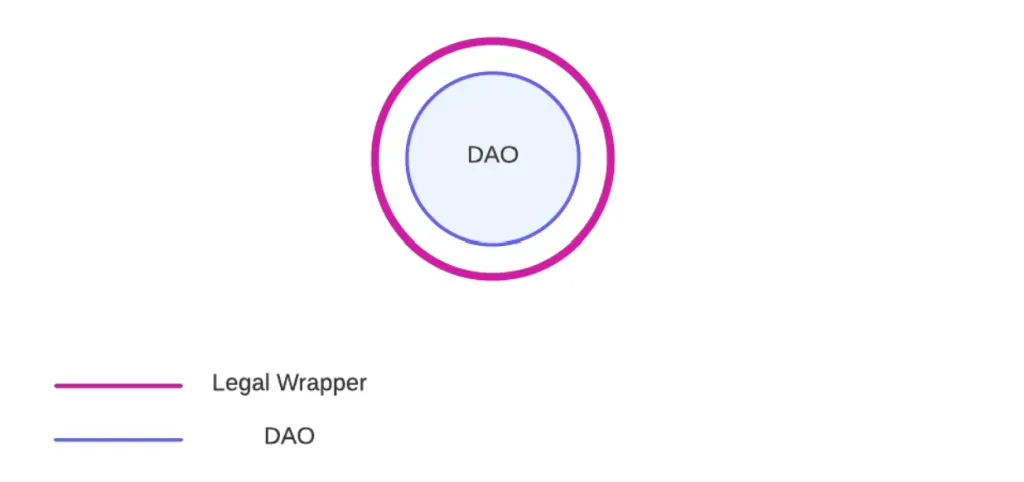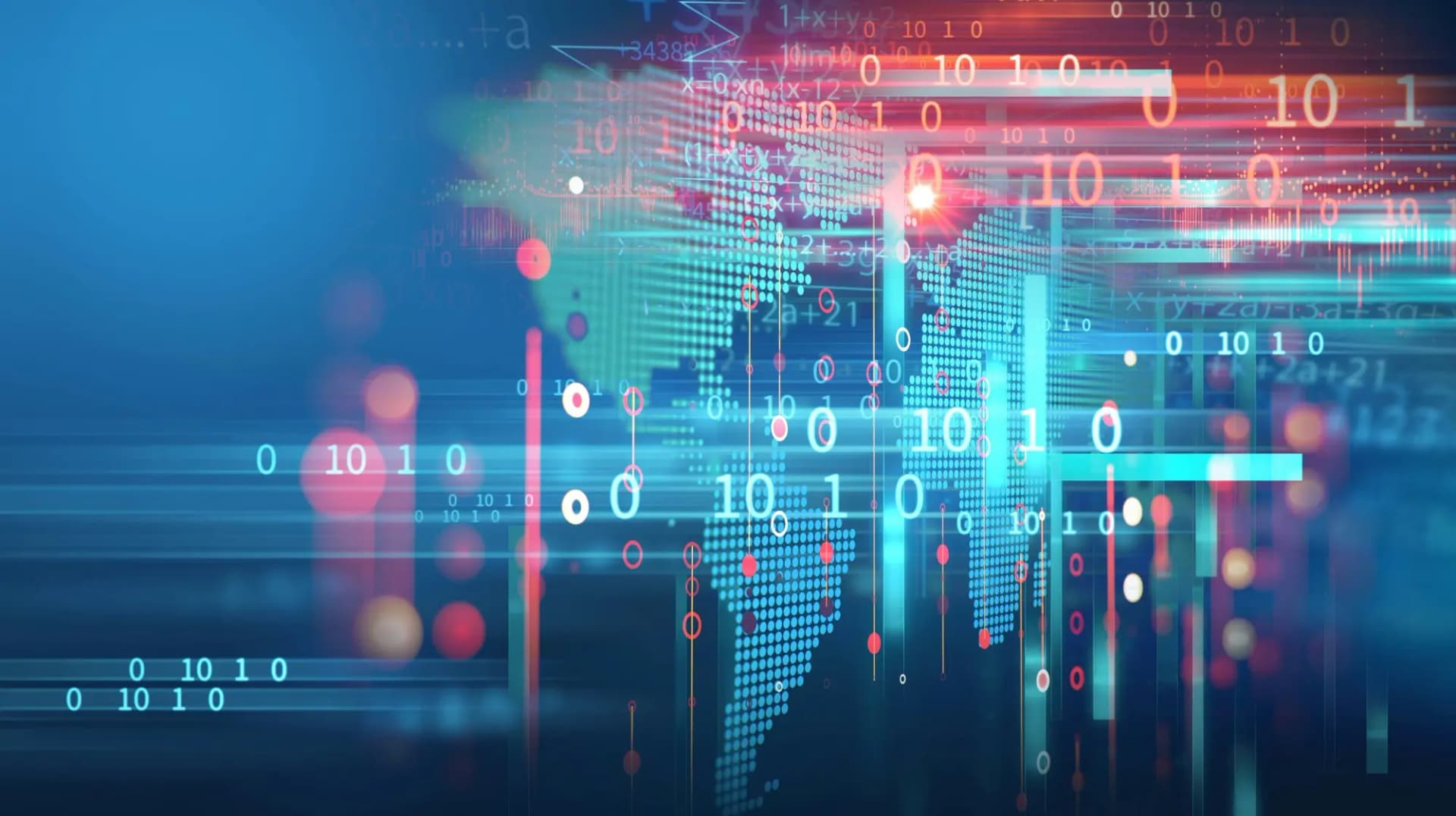Empowering tomorrow’s leaders. Mission

Framework for Utilizing Legal Wrappers in DAO Ecosystems
Summary: We are confident that by reimagining the role of legal wrappers and utilizing the concept described in this article, DAOs can effectively integrate legal vehicles to support their growth while maintaining the core principles of decentralization.
Authors:

Managing partner

Introduction
The concept of “DAO legal wrapper” has generated a lot of buzz, often accompanied by myths and misconceptions. In this article, we present a framework for incorporating legal vehicles into DAO ecosystems, with a particular focus on decentralization as a key aspect in empowering DAO communities. We clarify the role of legal wrappers and suggest ways they can be integrated into DAOs to benefit their members, without necessitating the alteration of their existing on-chain structures.
What is Decentralization in a DAO?
Decentralized governance driven by token holders is the essence of any DAO. However, what is even more important about DAOs is decentralized initiative, contribution and interaction among members.
The DAO concept does not pertain to any other form of shared corporate governance, like voting by shareholders. In corporations, the management of operations is centralized and conferred with the board of directors, while communities, workers, the environment and other key stakeholders are often left without a meaningful voice in the governance of these enterprises. The DAO phenomenon can be viewed as a technical complement to grassroots and formal efforts to create more responsive organizations. DAOs seek to restructure hierarchical management set-ups and the classical separation of ownership and control by broadening participation in governance and aligning rewards with labour, contribution and participation. In a DAO, by design every member should have an opportunity to actively engage in shaping the direction of the organization, and contribute their unique skills and perspectives to achieve collective goals. This democratic and collaborative approach is the driving force behind the success of DAOs as it empowers members to take control of the organization and work together to create meaningful and impactful outcomes.
During the nascent phase of most DAOs, the founding developers act as core contributors and often hold the majority of the voting power. This phase of immaturity is often accompanied by specific failures in coordination. Further natural growth and evolution of any DAO should aim to achieve security, economic efficiency, stability and robustness by sufficient decentralization. This term is attributed to William Hinman the former SEC’s director of Division of Corporation Finance. Marc Boiron in his “Sufficient Decentralization: A Playbook for web3 Builders and Lawyers” provides in depth analysis of the concept of “Sufficient Decentralization” and shares valuable recommendations on who it can be achieved.
The sufficient decentralization of DAOs is likely the main concern of lawyers and regulators and a primary focus of this article.
Methods of decentralization assessment can vary significantly across regulatory bodies, with no uniform approach in place. The following list of questions formulated by the The Financial Action Task Force (FATF) for evaluating virtual asset service providers is not exhaustive but sheds the light on how regulators may approach analysis of the role of the team behind a blockchain protocol:
“… who profits from the use of the service or asset, who established and can change the rules, who can make decisions affecting operations, who generated and drove the creation and launch of a product or service, who maintains an ongoing business relationship with a contracting party or another person who possesses and controls the data on its operations, and who could shut down the product or service?”
On its way to decentralization, apart from the architectural decentralization of technology and smart-contract performance, a DAO must work on political decentralization in order to strengthen the system’s fault tolerance, social corruption and collusion resistance through increasing the number of individuals and organizations who ultimately control the blockchain protocol and contribute to its development. These include two parallel vectors of work — developing distributed governance and fostering decentralized contributions, — because while voting by governance token holders is the ultimate decision-making mechanism, the initiative and draft decisions for approval always originate from contributors, whether they are DAO members or not.
By “decentralized contributions”, we assume a DAO as an ecosystem of interacting autonomous contributors and micro-organizations composed of such contributors. These may take the form of subDAOs, pods, committees, or independent service providers. In such case, the role of a DAO as a structure is to provide the necessary infrastructure and rules to foster interactions of independent contributors, maintain balance and competition between them, prevent the concentration of information, control and power in closed groups, facilitate meritocracy and dialogue, ensure easy access to newcomers and rotation of contributors where necessary.
We, therefore, define DAO as an ecosystem comprising numerous autonomous contributors who can either operate independently or collaborate within sub-organizations regardless of whether they hold any DAO tokens or not, rather than merely being an organization of token holders. Keeping this perspective in mind, we can discern the place and significance of a legal wrapper in a DAO ecosystem.
What is the Role of a Legal Wrapper in a DAO?
The following is the illustration of a common perception of DAO legal wrappers:
 (Pic. 1)
(Pic. 1)
In the above example, a legal wrapper is viewed as an organization of a higher level that absorbs a DAO. The role of the legal wrapper is viewed as all-encompassing, including business and strategy development, facilitation of operations, issuance of tokens, holding assets and treasury, employment, and legally shielding DAO members.
Contrary to the intended decentralized nature of DAOs, in these types of organizations, core contributors often establish a legal entity, assume all managerial positions, and consequently initiate a shift towards centralization. The presence of a singular business and legal unit leads to the consolidation of power, decision-making authority, and the accumulation of insider information, which negatively impacts the free flow of meaningful initiatives. This ultimately diminishes the importance and effectiveness of DAO governance.
Alternative Concept
We suggest thinking of a legal wrapper not as the all-encompassing, ultimate structure, but as one of the elements of the ecosystem instead, like a contributor concentrating on a specific range of objectives designated by the DAO. This concept is illustrated in Picture 2 below.
 (Pic. 2)
(Pic. 2)
The concept implies that a legal vehicle is just another sub-organization with a set of functions within the DAO ecosystem. It does not replace or absorb a DAO.
Typically, in this case, the primary purpose of a legal wrapper is to oversee operations taking place off the blockchain, where a DAO itself can not operate effectively due to the lack of legal personality. Consequently, a DAO may create multiple legal vehicles to wrap different DAO functions. In contrast to the example in pic. 1 the foregoing approach is aimed to foster decentralization, not harm it.
Utilizing Legal Wrappers
 (Pic. 3)
(Pic. 3)
Within this concept, legal wrapping can be used in various ways to benefit the DAO community.
There are three primary groups of use cases for legal wrappers:
(i) Legal Protection.
When structured properly, a legal wrapper can provide a certain degree of protection to DAO members. For instance, an ecosystem foundation, being a limited legal entity, assumes all responsibility when acting on behalf of the DAO. This is the case when it enters into agreements or performs other actions within the mandate granted by the DAO.
When structured properly, a legal wrapper can provide a certain degree of protection to DAO members. For instance, an ecosystem foundation, being a limited legal entity, assumes all responsibility when acting on behalf of the DAO. This is the case when it enters into agreements or performs other actions within the mandate granted by the DAO.
A special purpose trust can build an additional perimeter of protection around a specific group of contributors, subDAO, pod or multisig.
Finally, DAO participants, being members of an incorporated association or DAO LLC can benefit from mitigated personal negative tax implications and reduced risks of being recognized as an unincorporated partnership when managing affairs of the organization or voting collectively.
(ii) Legal Avatar for legal arrangements
Legal wrappers are essential in circumstances where the DAO is unable to act effectively due to its lack of legal personality.
For instance, every DAO must secure intellectual property rights for its products and developments from contributors and have the ability to grant rights to the public, typically through various open-source licenses. An ecosystem foundation serves this purpose well and can also legally engage contributors and administer grant programs.
Another use case involves legally safeguarding the intellectual property and other assets of the organization, including representing its interests in court, and filing for the registration of trademarks associated with the DAO’s products and services.
(iii) Other off-chain activities
With a legal wrapper in place, a DAO can open bank accounts, process fiat payments, manage subscriptions, cover infrastructure costs, handle accounting and legal matters, conduct official correspondence, and more.
While DAO contributors may be capable of managing some of these operations, transferring these responsibilities to the legal wrapper could offer increased protection for contributors, enhance operational organization, promote accountability, and improve the DAO’s overall image and reputation.
Balancing Control and Decentralization
When considering the creation of a legal wrapper, an immediate natural aspiration of the initial contributors is to retain control over the newly formed legal entity by assuming all or majority of managerial positions in it, following the conventional corporate tradition. However, as mentioned above, this approach may undermine the principles of decentralization and the idea of a DAO itself, fortifying the regulatory and compliance risks rather than diminishing them.
To address these concerns, it is essential to perceive the legal wrapper as an integral component of the DAO ecosystem, functioning as one of the contributors with a distinct set of objectives, akin to any other contributor. Furthermore, certain legal wrapper structures, such as ownerless foundations, are designed for indefinite existence and, in conjunction with the DAO, may potentially “outlast” the project’s initial team.
Consequently, it is evidently more crucial to develop systematic processes for the DAO’s oversight of the legal wrapper, rather than prioritizing immediate control for the team. This approach fosters the creation of more robust and enduring structures that are better equipped to withstand challenges over time.
The issue of control is crucial because the legal wrapper may hold and manage certain valuable assets pertaining to the DAO (if the DAO ever decides to entrust the wrapper with such assets). To attain this desired state, a comprehensive set of legal and organizational measures must be put in place to determine appropriate objectives and responsibilities of the legal structure, subordinate the managerial bodies of the legal wrapper to the DAO and its resolutions, and establish limitations on certain actions, such as disposition of intellectual property or other material property. The management of the wrapper must regularly report to the DAO, including on the material transactions and expenditures to ensure transparency.
Lastly, considering that the legal wrapper must be subordinate to the DAO, the latter should maintain the authority to pass a resolution to replace the legal structure’s managers at any time.
By implementing the aforementioned control procedures, a DAO and its core contributors can confidently delegate the establishment and management of a legal wrapper to fellow contributors or third-party professional managers. This approach not only fuels and strengthens decentralization, but also provides enhanced options for effective DAO legal structuring and risk mitigation.
Conclusion
We are confident that by reimagining the role of legal wrappers and utilizing the concept described in this article, DAOs can effectively integrate legal vehicles to support their growth while maintaining the core principles of decentralization.






